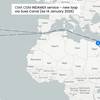Awareness of the ways of calculating loss of earnings claims can be useful in both presenting and challenging this type of claim. This Gard Insight looks at some general principles and methods applied by the courts.
A product tanker was hit by a bulker while at berth. Although the extent of the physical repairs - and therefore the repair costs - were relatively limited, the damaged tanks required stainless steel plates which had to be specially ordered.
Long lead times led to a significant loss of earnings. As owners were able to document this loss with care and precision, leaving little room for doubt, the case against the owners of the bulker was settled quickly and amicably.
A claimant not only has the burden of proving that it has lost earnings as a result of the collision but also that it has suffered an actual loss. The fact that a ship has been unable to trade due to repairs being carried out is generally not enough, though it raises an obvious presumption that the shipowner has indeed suffered some sort of loss.
In the majority of jurisdictions, the principle of restitutio in integrum governs the measure of damages. This means that a shipowner who suffers a loss of earnings due to the negligence of another party will be put back into the position it would have been but for the negligence.
Therefore, the shipowner must prove what the ship would have earned had the collision not occurred. This means that if the repairs are performed during a pre-arranged dry-docking period for example - there will be no loss.
The methods used to prove the loss depend on the facts of each case and one approach is not necessarily better than another. The optimal way is largely dependent on the trade patterns of the ship at the relevant time.
If a ship is damaged in a collision it will usually go off-hire until it has been repaired and able to function again under the terms of the charterparty. The shipowner can rely on specific off-hire statements and invoices from charterers.
For a ship trading on the spot market, the approach is more flexible to calculate its loss of earnings. The starting point will be the total number of days the ship is unable to trade due to repairs, including removal time to the shipyard.
Loss of earnings claims can arise in other contexts, e.g. where a ship damages a quay or shore based crane and renders part of a terminal unusable. The underlying assumptions and calculations involved can be complex and the appointment of a forensic accountant with knowledge of the local accountancy rules and tax law may very well be necessary in order to properly defend a shipowner’s position.
It is well worth spending time and effort in presenting loss of earnings claims in a clear and unambiguous manner, so that both parties understand the figures presented and the assumptions behind them. This can help achieve a quick settlement in a collision dispute.












